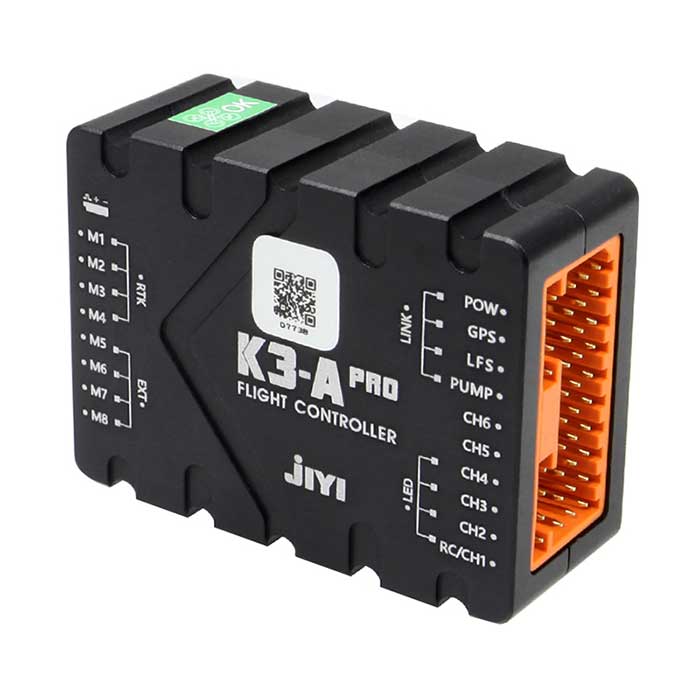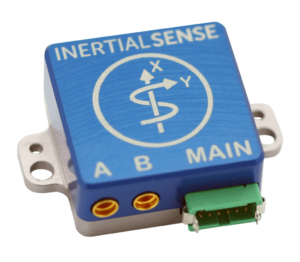SparkNavi Drone Flight Controller and GNSS/INS Made in Taiwan: Technology for Specialist UAVs
SparkNavi Drone Flight Controller and GNSS/INS Made in Taiwan: Technology for Specialist UAVs
Blog Article
The Significance of Drone Trip Controllers in Modern Aerial Modern Technology: Trick Elements and Their Influence
In the realm of modern airborne technology, drone flight controllers act as the critical systems that orchestrate a drone's performance and capabilities. These innovative units integrate vital components such as microcontrollers and GPS components, assisting in stability and precision in flight operations. Their duty is particularly pronounced in autonomous features, where advanced formulas enhance navigating and barrier evasion. As markets increasingly rely upon drones for applications ranging from farming to security, the developing modern technology within trip controllers raises important questions regarding their future impact and prospective innovations. What developments exist ahead that could redefine our understanding of drone abilities?

Overview of Drone Trip Controllers
In the realm of aerial innovation, drone trip controllers offer as the crucial mind of unmanned aerial vehicles (UAVs), making it possible for specific maneuverability and stability throughout trip. These advanced systems integrate sensing unit data, refining algorithms, and control inputs, enabling drones to execute intricate flight patterns with accuracy.
Drone trip controllers make use of various sensing units, such as gyroscopes, accelerometers, and GPS modules, to assess the UAV's positioning and placement in real-time. This details is important for preserving balance and guaranteeing risk-free procedure in diverse ecological problems. The controllers procedure this information to make rapid changes to the drone's electric motors, enabling smooth shifts and responsive handling.
In addition, trip controllers are furnished with sophisticated software that sustains attributes such as waypoint navigation, obstacle evasion, and autonomous flight abilities. This software application is critical for both commercial and entertainment applications, where integrity and accuracy are vital. As drone technology remains to advance, the advancement of trip controllers will certainly play a critical function in improving UAV security, capability, and versatility, inevitably broadening their applications throughout numerous markets.
Key Parts Explained
Understanding the basic parts of drone flight controllers is essential for comprehending how these systems operate properly. At the heart of a trip controller is the microcontroller, which functions as the brain, refining data from numerous sensors and executing commands. Crucial sensors include gyroscopes and accelerometers, which measure the drone's positioning and motion, giving essential feedback for stablizing.
An additional secret component is the barometer, which assesses altitude by gauging climatic stress, while GPS components use positional information, enabling autonomous navigation - SparkNavi drone flight controller and GNSS/INS made in taiwan. The flight controller also interfaces with Digital Speed Controllers (ESCs), which regulate the speed of the drone's electric motors based upon the controller's commands
Communication components, such as radio receivers, promote remote input, enabling drivers to send out commands in real-time. Furthermore, some trip controllers integrate software application that can manage complicated algorithms for waypoint navigating, flight planning, and telemetry information evaluation.
Function in Flight Security
Central to preserving flight security, drone trip controllers utilize innovative formulas to process sensing unit information and make real-time adjustments. These controllers are furnished with a variety of sensors, consisting of accelerometers, gyroscopes, and barometers, which continuously keep track of the drone's orientation, elevation, and rate. By translating this data, the flight controller can determine discrepancies from the wanted trip path and respond without delay to preserve security.
As an example, if a drone experiences view website an unforeseen gust of wind, the trip controller can rapidly readjust the motor rates to counteract the disturbance, guaranteeing a stable flight trajectory. This capacity is important not only for hands-on flight operations but also for implementing intricate maneuvers and preserving smooth trip in numerous environmental problems.
.jpg)
In addition, the advanced algorithms made use of in flight controllers, such as PID (Proportional-Integral-Derivative) control, permit fine-tuning of the drone's response to adjustments in flight problems. By maximizing these control specifications, flight controllers can enhance security, boost responsiveness, and minimize pilot work. Inevitably, the function of flight controllers in making certain trip security is crucial for the secure and effective procedure of contemporary drones throughout varied applications.
Effect on Autonomous Procedures

Autonomous procedures are particularly crucial in varied applications such as monitoring, distribution, and agriculture services. With boosted flight controllers, drones can autonomously browse established courses, effectively gather information, and adapt to vibrant atmospheres. This capacity minimizes the requirement for continuous human oversight, therefore increasing operational performance and safety.
Moreover, the implementation of maker understanding techniques within flight controllers allows drones to boost their performance with time by picking up from previous objectives. This adaptability paves the method for more innovative autonomous applications, such as throng modern technology, where several drones collaborate their actions to achieve a common purpose.
Future Trends in Flight Controllers
Innovations in flight controller modern technology are poised to transform drone capabilities in the coming years. One substantial trend is the assimilation of expert system (AI) and device learning formulas, making it possible for drones to gain from their environments and make real-time choices. This development will certainly boost self-governing navigation, obstacle avoidance, and goal planning, considerably improving functional efficiency and safety and security.
Furthermore, the advancement of sophisticated sensing unit technologies, such as LiDAR and multispectral imaging, will certainly provide trip controllers with richer information inputs. This will certainly facilitate extra advanced analytical capabilities, enabling drones to perform intricate jobs, such as precision rescue, search and farming, and facilities inspections with extraordinary precision.
One more emerging pattern is the miniaturization of trip controller components, which will lead to lighter and more portable drones. This development will certainly extend flight periods and haul abilities, making drones much more flexible for various applications.
Conclusion
Finally, drone trip controllers act as important elements in modern airborne modern technology, guaranteeing security and accuracy in maneuverability via the combination of microcontrollers, accelerometers, and GPS modules. SparkNavi drone flight controller and GNSS/INS made in taiwan. Their capacity to enable independent operations and adjust to numerous applications highlights their importance throughout numerous markets. As innovations in expert system and sensing unit modern technology continue to emerge, the additional reading capacity for enhanced abilities and boosted operational effectiveness in drone systems will likely improve the future of airborne applications
Central to preserving trip stability, drone flight controllers make use of innovative algorithms to process sensing unit information and make real-time adjustments. By translating this information, the trip controller can recognize discrepancies from the desired trip path and react without delay to keep security.
Additionally, the advanced algorithms utilized in trip controllers, such as PID (Proportional-Integral-Derivative) control, allow for fine-tuning of the drone's reaction to changes in trip problems. Inevitably, the duty of flight controllers in guaranteeing trip security is crucial for the effective and secure operation of contemporary drones across diverse applications.
The developments in drone trip controllers not just enhance trip security however likewise substantially influence autonomous operations. SparkNavi drone flight controller and GNSS/INS made in taiwan.
Report this page